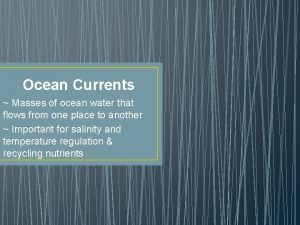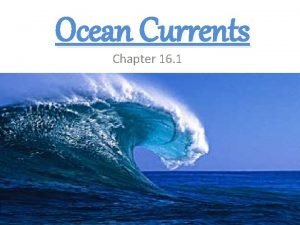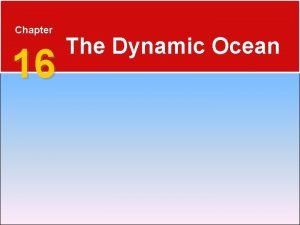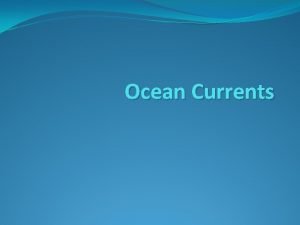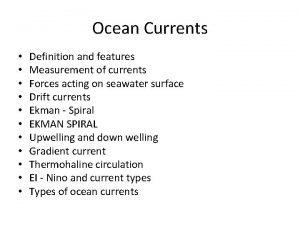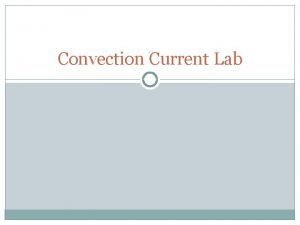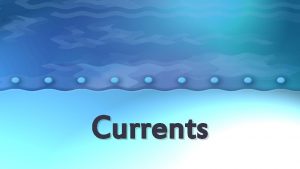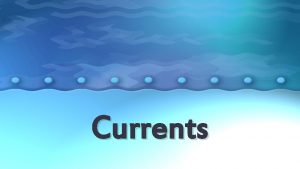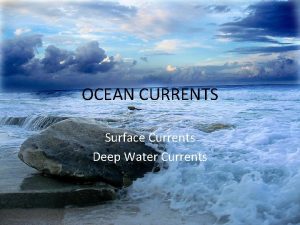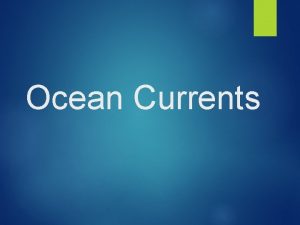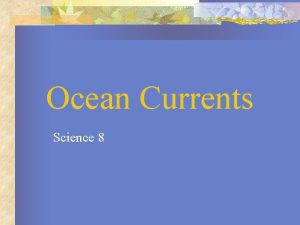Ocean Currents Masses of ocean water that flows









- Slides: 9

Ocean Currents ~ Masses of ocean water that flows from one place to another ~ Important for salinity and temperature regulation & recycling nutrients

Surface Circulation • Movements of water that flow horizontally in the upper part of the ocean’s surface • Develops from friction between the ocean and the wind that blows across its surface

Gyres • Huge circular moving current systems that dominate the surfaces of the ocean, large whirls of water within an ocean basin • 5 Main Ones: North Pacific, South Pacific, North Atlantic, South Atlantic, and Indian

Coriolis Effect • Deflection of currents away from their original course as a result of Earth’s rotation • Because of Earth’s rotation, currents are deflected to the right in the North Hemisphere and to the left in the South Hemisphere • About 6 years to go through the loop

Coriolis Effect

Ocean Currents and Climate • When currents from low latitude regions move into higher latitudes, they transfer heat from warmer to cooler areas on Earth • As cold water currents travel toward the equator, they help moderate the warm temperature of adjacent land areas

• Maintains heat balance – 25% transfer heat from the tropics to polar regions, 75% is winds • Upwelling : Rising of cold water from deeper layers to replace warmer surface water • Brings a greater concentration of dissolved nutrients such as nitrates and phosphates, to the ocean surface and colder waters

Deep Ocean Circulation • Vertical → Density Currents : Vertical currents result from water mass density differences • Denser water sinks – Increase in density caused by a decrease in temperature or increase in salinity

Deep Ocean Circulation • Conveyor Belt → Influences global climate by converting warm water to cold water and releasing heat into the atmosphere
